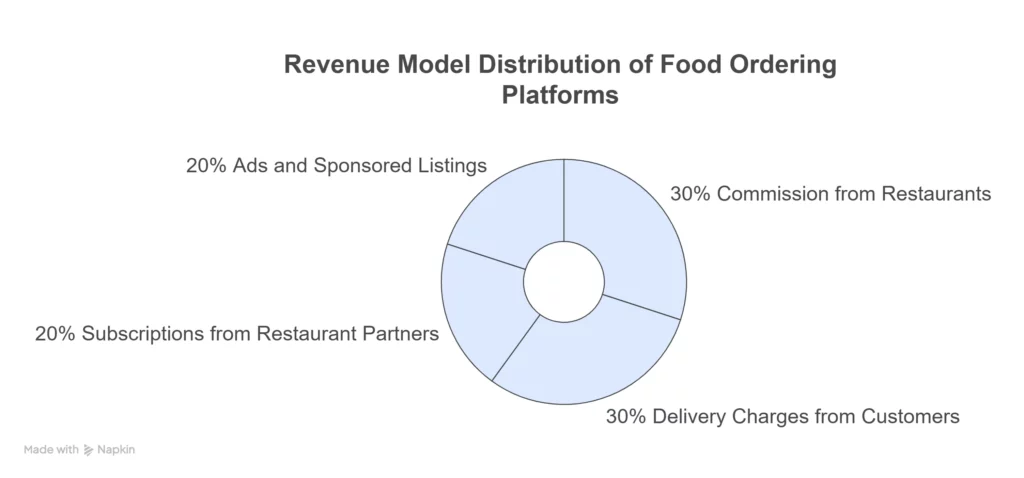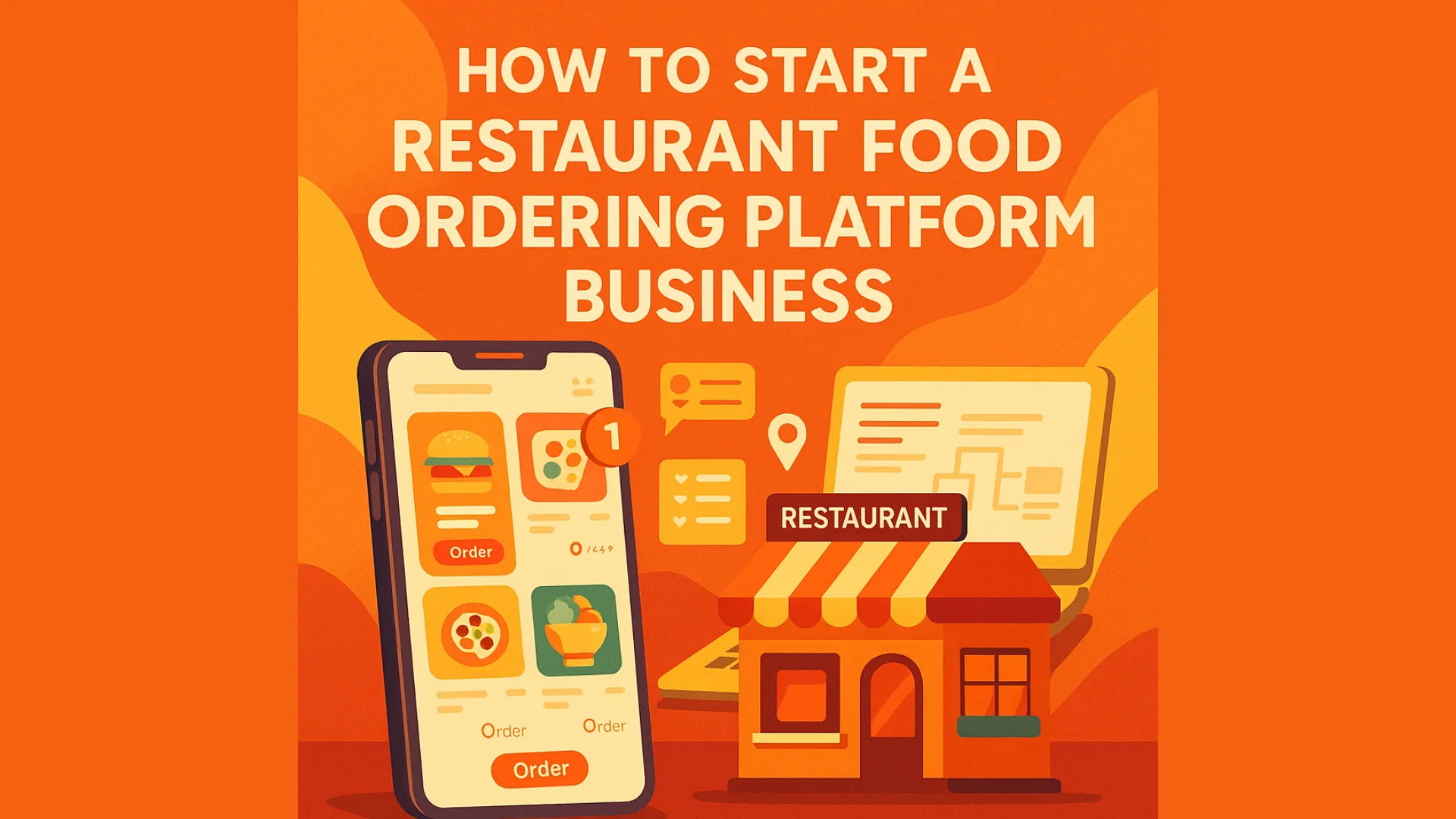Back in college, I knew someone who hated cooking and lived off food delivery apps. One day, after spending over ₹20,000 in a month on takeouts, he sighed, “I wish I owned the app instead.” Fast forward a decade, and food ordering platforms have exploded into a billion-dollar industry.
From pandemic-driven convenience to the rise of hyperlocal delivery, ordering food online has become second nature. Whether it’s a cozy cafe around the corner or a premium sushi bar, everyone’s looking for a slice of the online pie. But here’s the twist — you don’t need to run a restaurant to profit. You just need to build the right platform.
And that’s where smart entrepreneurs (like you, maybe?) come in. Let’s unpack how to start a restaurant food ordering platform business — and how Miracuves can make sure you don’t have to start from scratch.
Why Start a Food Ordering Platform Business?
The Appetite is Real
According to Statista, the online food delivery segment is projected to reach over $466 billion globally by 2027. From dine-in anxiety to remote work, people want the convenience of tapping a screen and having biryani show up at their door.
Low Overhead, High Returns
Unlike a traditional restaurant, a platform model means:
- No food inventory
- No chefs to manage
- Scalable across cities or countries
Multiple Monetization Models
Commission cuts, subscriptions for restaurants, delivery fees, ads, sponsored listings — you name it. Your platform can be monetized in creative ways. We’ll dive into that shortly.

Read More : – What is Foodpanda App and How Does It Work?
First Things : What Kind of Platform Do You Want to Build?
1. Aggregator Model
Like Uber Eats, Zomato, or DoorDash — list multiple restaurants, manage the customer side, and optionally the delivery part.
2. Self-Delivery Model
Think ChowNow — the platform lets restaurants manage their own deliveries while providing white-labeled tech.
3. Hybrid Model
Offer options for both — allow restaurants to use their own delivery or integrate with your fleet.
Key Features You Must Include
For Customers:
- Smart search and filters
- Real-time order tracking
- Payment integrations
- Ratings & reviews
- Promo codes and loyalty points
For Restaurants:
- Menu management
- Order dashboard
- Earnings reports
- Customer insights
For Admins:
- Commission settings
- Restaurant onboarding tools
- Analytics dashboard
- Dispute management
Read More : – What is HungerStation App and How Does It Work?
Tech Stack That Powers the Platform
- Frontend: React Native (mobile), Vue.js (web)
- Backend: Node.js or Laravel
- Database: PostgreSQL / MongoDB
- Real-time: Socket.IO for live order updates
- Cloud & Hosting: AWS / Firebase
- Payments: Stripe, Razorpay, PayPal
Learn from the Giants: Real-World Inspirations
Here’s a cheat-sheet of top players and what they do best:
| Platform | USP |
| ChowNow | Commission-free for restaurants |
| DoorDash | Wide delivery range, smart AI routing |
| Zomato | Deep local integrations, dine-in features |
| Swiggy | Hyperlocal grocery + restaurant fusion |
| Grubhub | Seamless ordering, strong brand equity |
| Slice | Niche-focused (pizza only), loyal user base |
| ToastTab | POS system bundled with delivery app |
How Do You Make Money?
- Restaurant Commission: 10–30% per order
- Delivery Charges: Passed to customer
- Subscription Plans: For priority visibility
- Ads & Promotions: Boost restaurant listings
- Data Insights: Sell anonymized data to vendors or use for upselling
Read more: What is Goldbelly App and How Does It Work?
How to Attract and Retain Users?
- Launch with exclusive partner restaurants
- Provide discounts for first-time users
- Enable live chat support for trust
- Reward loyalty with referral bonuses
- Keep UI lightning-fast and intuitive
Read More : – What is Delivery Hero App and How Does It Work?
Legal & Operational Things You Can’t Ignore
- Privacy Policy & Terms of Service
- FSSAI license (India) or relevant food authority rules
- Data security compliance (GDPR, CCPA)
- Third-party delivery liability clauses
- Restaurant onboarding contracts
Conclusion
Building a food ordering platform isn’t just about tech. It’s about timing, trust, and taste — metaphorically and literally. The market is hot, and users are hungry. The question is: Will they order from your app next? Whether you’re thinking small-town or big-metro, you’ll need to choose a model that resonates with your audience. If you’re thinking of going hyperlocal first, here’s a strategic starting point:
At Miracuves, we don’t just build apps — we empower entrepreneurs with scalable, revenue-ready solutions tailored for growth. If you’re ready to serve success, we’re ready to help you build it.
FAQs
Q1. What’s the minimum investment to launch a food ordering app?
You can launch a complete food ordering app with Miracuves for $2K to $5K using a ready-made clone solution, delivered within 3–6 days including setup and deployment.
Q2. Do I need to own restaurants to start a platform?
Not at all. You’re the tech enabler. Restaurants sign up to list on your app.
Q3. Can I operate without handling deliveries?
Yes! Use a self-delivery model or integrate with delivery partners like Dunzo or Shadowfax.
Q4. How soon can I launch with a Miracuves clone?
Typically within 7–15 days, depending on the level of customization.
Q5. Is this scalable across cities?
Absolutely. The backend supports multiple zones, languages, and currencies.
Q6. Can I white-label the solution?
Yes, Miracuves provides full branding and white-labeling support for your app.
Related Articles:








